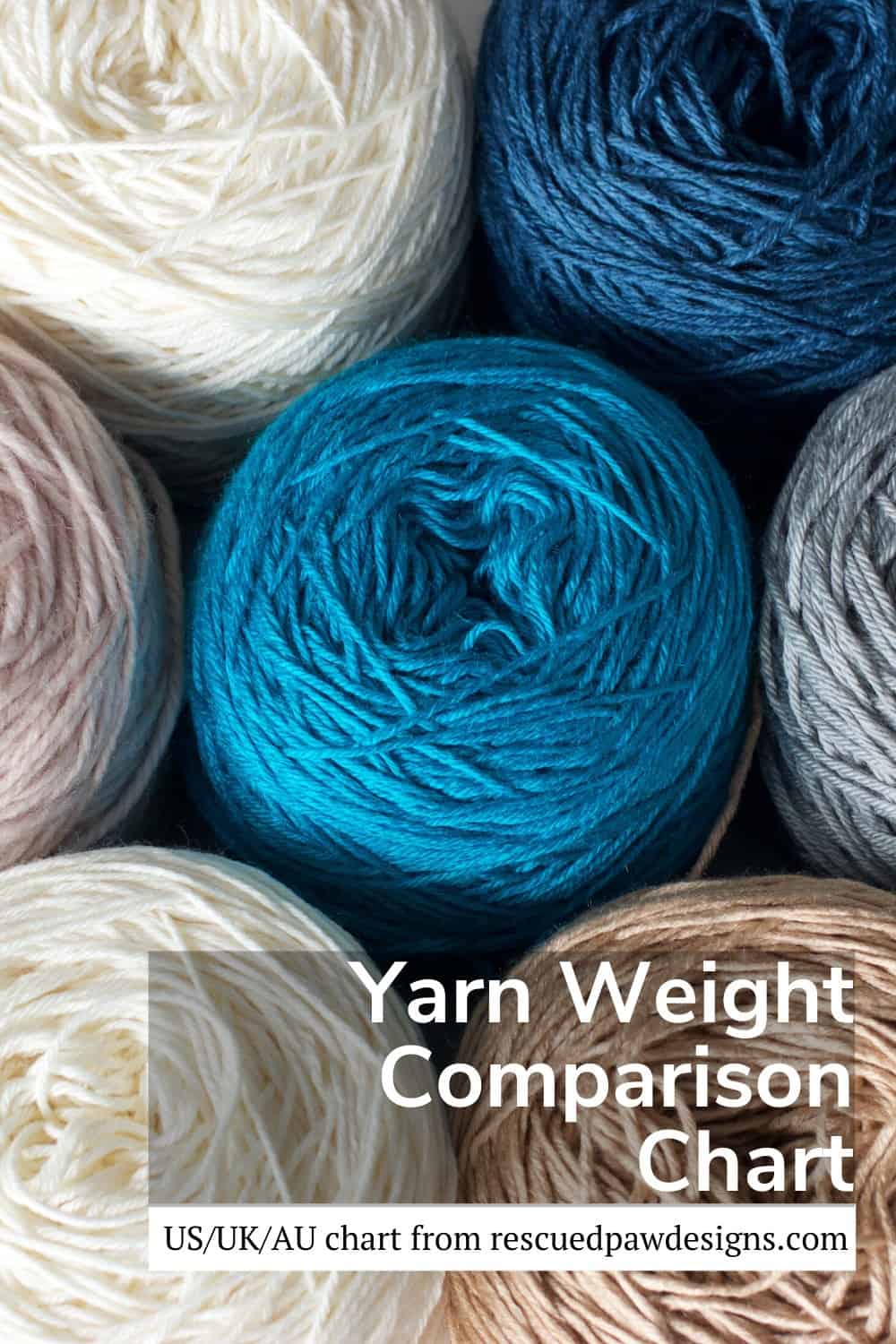Crochet Yarn Weight Guide & Yarn Weight Chart
Are you looking for a quick explanation of what yarn weight is or the weights of yarn mean? Maybe you are wondering what the numbers on the size of your yarn label mean too? Either way, I can help!
Below I will explain what yarn weights mean, what the numbers are on the label, show you how to find crochet patterns that will work with the weight of yarn you have plus more!
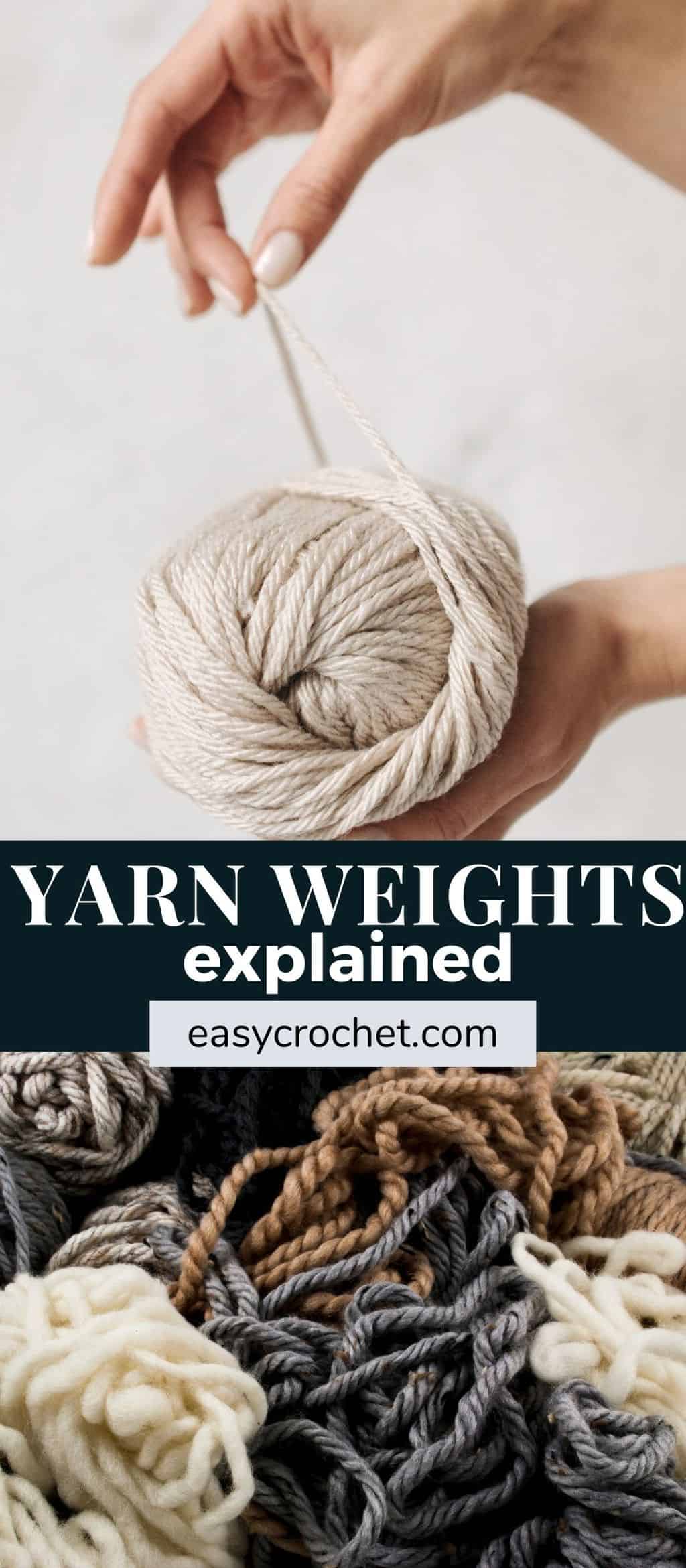
Free Printable Yarn Weight Chart
For a free printable of our crochet yarn weight chart, enter your email address below. A link will then appear in your email’s inbox.
What Do Yarn Weight Numbers Mean?
Yarn weight has nothing to do with how much it weighs, but actually with how thick or thin the strand of yarn is.
You may be wondering why there are so many yarn weight names to begin with. One example is that a blanket needs a different weight (sometimes referred to as yarn size) most commonly 3, 4, 5 or 6 weight than appliquéing which usually uses a lighter weight yarn such as a 1 or 2.
These different yarn sizes account for those differences in projects. Another example is if you want to crochet a cozy blanket that will keep you warm in winter, you will more than likely use a thicker yarn compared to a thinner worsted weight yarn.
Yarn Weight Descriptions
Yarn weights go by so many names, it can be really difficult to keep track of what’s what. Use the yarn weight chart below as a guide to determine what weight yarns needs to be used according to what the crochet pattern asks for.
You can learn more about each of the different yarn weights below in the chart, as well as what crochet hook size works with each yarn. The yarn weight categories explained below are based on the CYC (Craft Yarn Council) Standard Yarn Weight System.
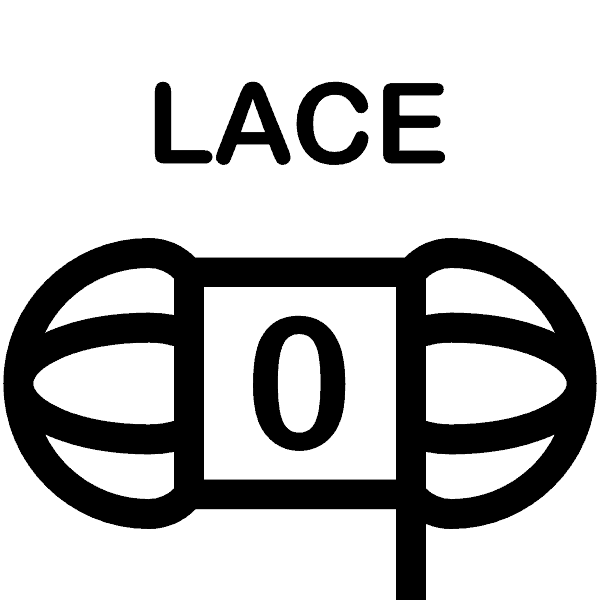
Weight #0 or Lace includes yarn type fingering 10-count crochet thread. This weight of yarn is commonly used with the US hook size of 6/7/8 (steel) and B-1 of regular. The metric equivalent is 1.6-1.4 mm for steel and the regular metric hook size of 2.25 mm.
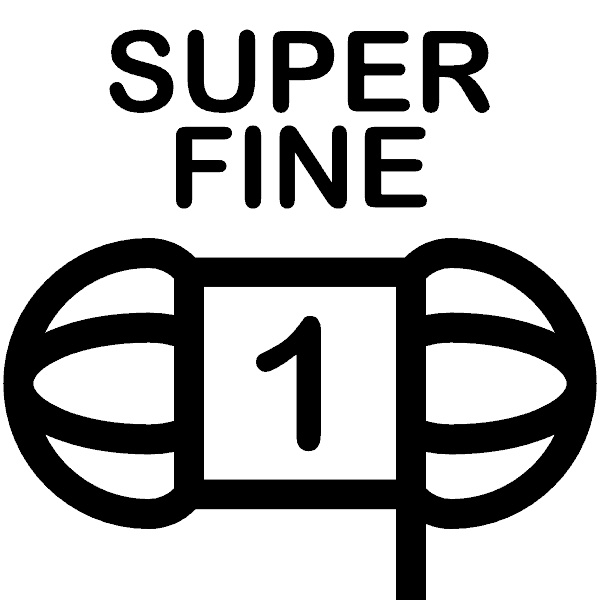
Weight #1 or Super Fine includes yarn types of sock, fingering, and baby. This weight of yarn is usually crocheted using the US hook sizes of B-1 to E-4 and the metric sizes of 2.25 – 3.5 mm.

Weight #2 or Fine includes yarn types of sport and baby. This weight of yarn is usually crocheted using the US hook sizes of E-4 to 7 and the metric sizes of 3.5 – 4.5 mm.

Weight #3 or Light yarn includes the yarn types of DK and light worsted. This weight of yarn is usually crocheted using the US hook sizes of 7 to I-9 and the metric sizes of 4.5 – 5.5 mm
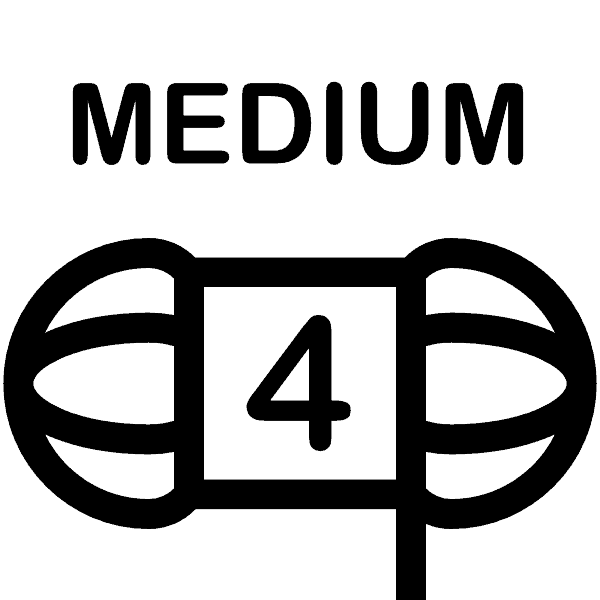
Weight #4 or Medium yarn includes the yarn types of worsted, afghan and aran. This weight of yarn is usually crocheted using the US hook sizes of I-9 to K-10 1/2 and the metric sizes of 5.5 – 6.5 mm.

Weight #5 or Bulky yarn includes the yarn types of chunky, craft and rug. This weight of yarn is usually crocheted using the US hook sizes of K-10.5 to M-13 and the metric sizes of 6.5 to 9 mm.

Weight #6 or Super Bulky includes the yarn types of super bulky and roving. This weight of yarn is usually crocheted using the US hook sizes of M-13 to Q and the metric sizes of 9 to 15 mm.
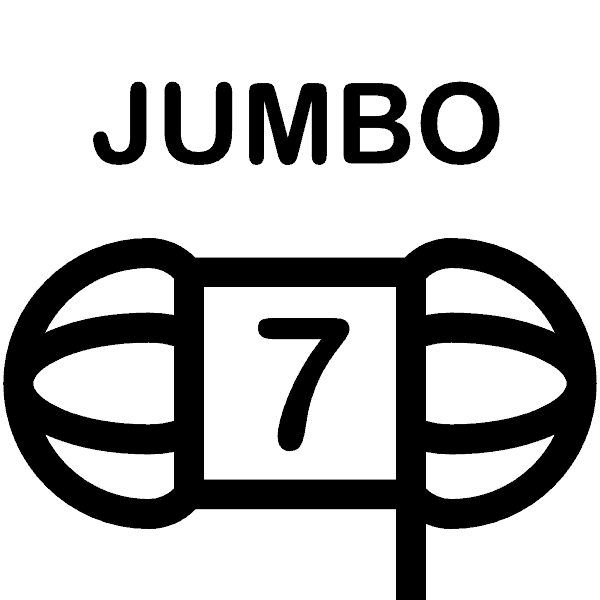
Weight #7 or Jumbo includes the yarn types of jumbo and roving. This weight of yarn is usually crocheted using the US hook sizes of Q (and larger) and the metric sizes 15 mm and up.
How Do I Tell What My Yarn Weight Is?
It is easy to know what the yarn weight is of yarn. The yarn weight of most yarns can usually be found on the side of most yarn packages or yarn labels. You will see a number ranging from zero to seven, which will be the weight of the yarn. Whatever number you see on the yarn label, that is what the yarn weight is.
If you have yarn that doesn’t have a label, you can use the “WPI” method or wraps per inch to determine the yarn weight. You can learn more about WPI down below the chart in our yarn FAQ section.
Yarn Weight Conversion Chart
I get numerous questions about yarn weights in my crochet patterns, but more specifically how to use a yarn that is in US terms vs UK terms vs Australian terms. This US to UK yarn weights vs Australia yarn weight comparison chart below will help you worked out yarn sizes when you don’t have access to the yarn the pattern calls for.
Below, in the yarn weight chart, the standard US yarn weight terms are side-by-side with their equivalent United Kingdom and Australian terms. Whether you are crocheting or knitting, this yarn size chart can help!
Yarn Size Chart
| USA | UK | Australia |
|---|---|---|
| #0 – Lace / Fingering | 1 ply | 2 ply |
| #1 – Super Fine / Sock / Fingering | 2 ply | 3 ply |
| #2 – Fine / Baby | 3 ply | 3 ply |
| #2 – Sport | 4 ply | 5 ply |
| #3 – DK / Light Worsted | DK | 8 ply |
| #4 – Worsted | Aran | 10 ply |
| #5 – Bulky | Chunky | 12 ply |
| #6 – Super Bulky | Super Chunky | 14 ply |
| #7 – Jumbo / Roving | n/a | n/a |
Crochet Patterns by Yarn Weight
All of our free crochet patterns are broken down by these same yarn weight classifications. You can click on each weight name, and see all the free patterns we’ve created for that particular yarn weight class.
Yarn Weight FAQ’s
What Does Ply Mean in Yarn?
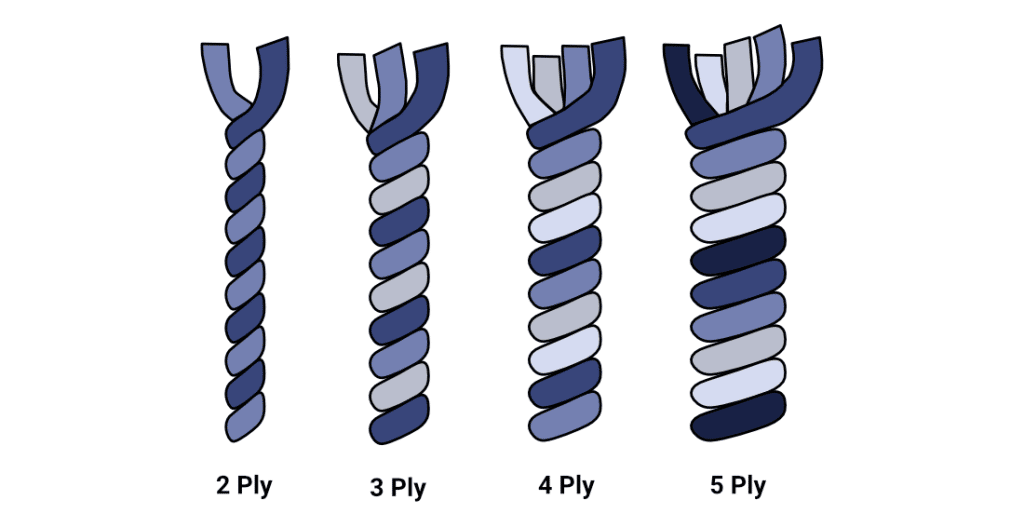
As you see above, yarns can also be classified in terms of the number of plies they have. For instance, a #0 yarn is “2 ply”, while a #5 weight yarn is a “12 ply”. So obviously, the number of plies increase as the weight does – but what exactly is a ply?
Plied yarns are composed of two or more single yarns twisted together. 2-ply yarn, for example, is composed of two single strands, and a 3-ply yarn is composed of three single strands, and so on.
What Does “WPI” Mean in Crochet?
WPI is a way to measure yarn weight per inch using a ruler and a pencil. To measure yarn weight using the WPI method, wrap the yarn around a small object like a pencil or Tunisian crochet hook for a few inches. You can also find WPI measuring tools to use in place of the pencil and ruler too. The wrapped yarn should be side by side and not overlapping. Next, use a ruler to measure how many wraps are per inch to determine yarn weight using the WPI chart below.
Wraps Per Inch (WPI) by Yarn Weight
| Yarn weight | WPI |
|---|---|
| #0 – Lace | 32+ |
| #1 – Super Fine | 14-30 |
| #2 – Fine | 12-18 |
| #3 – Light | 11-15 |
| #4 – Medium | 9-12 |
| #5 – Bulky | 6-9 |
| #6 – Super Bulky | 5-6 |
| #7 – Jumbo | 0-4 |
Keep in mind, this method to figure out yarn weight is not always accurate, since some may wrap yarn tighter than others.
What weight is 4-ply yarn?
A 4 ply yarn is equivalent to a 2 weight sport yarn.
What yarn weight should I use for my project?
Most crochet patterns will include what yarn weight to use on that particular project. If you’d prefer to use up some yarn you have on hand and your pattern, I’d suggest taking a look at the type of project you are going to make. If you are making a crocheting a blanket for winter you will want to use a thicker yarn, but if you are making a lightweight blanket for summer you can use a lower yarn weight.
What is worsted weight yarn?
Worsted weight yarn is a Weight #4 or Medium weight yarn. Four weight yarns include the yarn types of worsted, afghan and aran.
What does yarn weight five mean?
A five yarn weight is a bulky weight yarn. A Weight #5 or Bulky yarn includes the yarn types of chunky, craft and rug.
Does yarn weight matter in projects?
Yes, yarn weight matters in patterns. If a crochet designer calls for a four weight yarn to use with their gauge swatch, but you use a different type of yarn such as a five or six, the size of the project will turn out differently. The same goes vice versa, if you use a smaller yarn weight than called for, your project will turn out smaller. So in conclusion, yarn weight matters, so you don’t make a sweater too big or a hat too small.
What are the different types of yarns?
Yarn can not only be different weights, but it can be made of different fibers too. You can find yarn made with cotton, acrylic, bamboo, wool like alpaca and more! Learn more about the different types of yarn you can use to crochet or knit within our detailed post.
